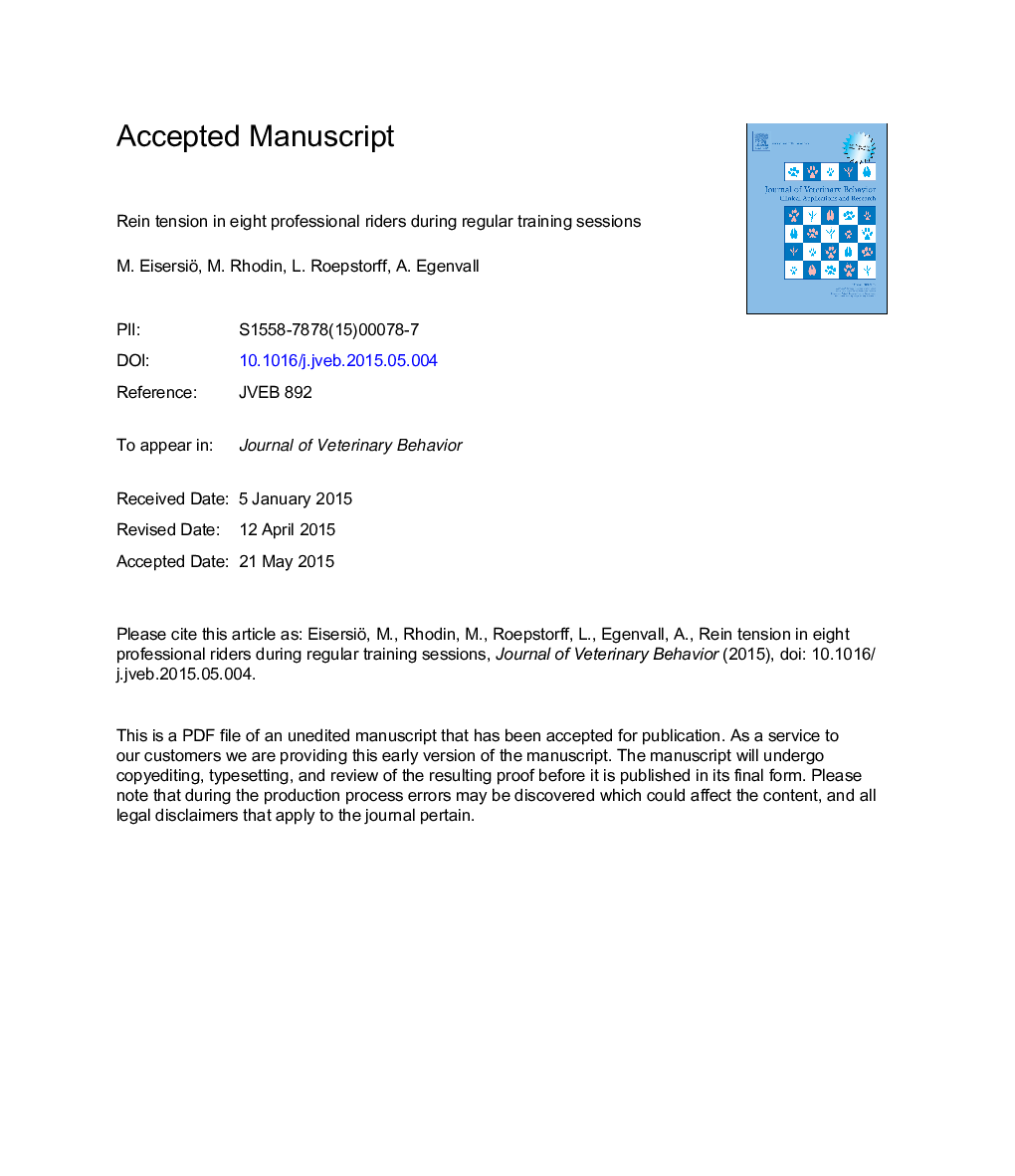| Article ID | Journal | Published Year | Pages | File Type |
|---|---|---|---|---|
| 10961787 | Journal of Veterinary Behavior: Clinical Applications and Research | 2015 | 35 Pages |
Abstract
Rein tension signals are commonly used to communicate the intended speed, direction, and head carriage to the horse during horseback riding. Rein tension has previously been recorded relative to gait, exercises, and turning maneuvers. The aim of this study was to target the between-gait and between-exercise variation in rein tension, controlling for riders and horses within riders, the between-rein variation, and the general within-gait or exercise variation, during entire riding sessions. Eight riders with 3 horses each were included in the study and each horse was fitted with a custom-made rein tension meter fastened on leather reins. Rein tension data and video films were collected during the riding session, and the video films were scrutinized and categorized according to ridden exercises. Statistics used to model rein tension in mixed models were “median”, area under curve, averages of 2 and 25 percentiles (“low”) and of 75 and 98 percentiles (“high”), and the difference between 98 and 2 percentiles (“range”). Fixed effects were rein, gait, rider's position, horse level, and type of ridden exercise, and random effects were horse-side, rider, horse, and trial within horse. The analyses demonstrate substantial variation between gaits, rider position within gait, and between riders and horses. Considering data on short reins, the major determinants found for amount of rein tension was gait (walk [median 12Â N both reins]
Related Topics
Life Sciences
Agricultural and Biological Sciences
Animal Science and Zoology
Authors
Marie Eisersiö, Marie Rhodin, Lars Roepstorff, Agneta Egenvall,
